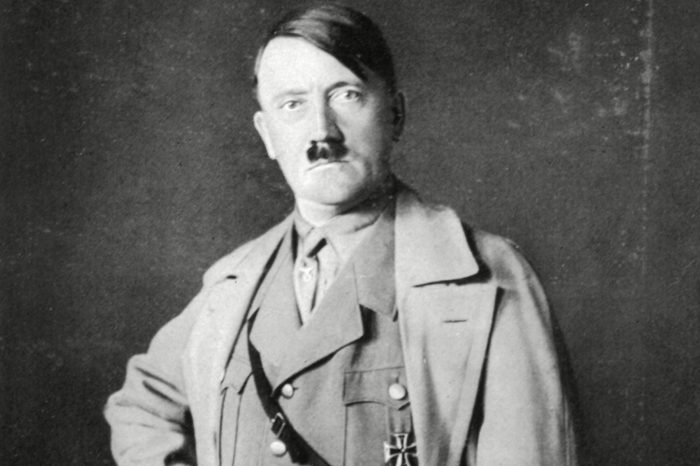
What country did Adolf Hitler’s nephew serve for in World War II?
Germany would be the obvious answer but his nephew, William Hitler, actually fought alongside his uncle’s arch nemesis—the Allied powers. William, a British native, served in the U.S. Navy for three years as a pharmacist’s mate. Of course, it wasn’t easy for people to trust the relative of an evil Nazi dictator. William was an outcast in England for bearing his surname and scrutinized in Germany due to rising tensions with his uncle. The war broke out in Europe while he and his mother were at a lecture in the United States sharing stories about his heinous uncle, which prevented them from returning overseas. In order to prove his worth once and for all, William enlisted in the U.S. armed forces. And once again, he was denied. But after a sincere letter to the president and a thorough background check, William was finally accepted to help fight for what was right. Don’t miss these 9 famous history moments that never actually happened.
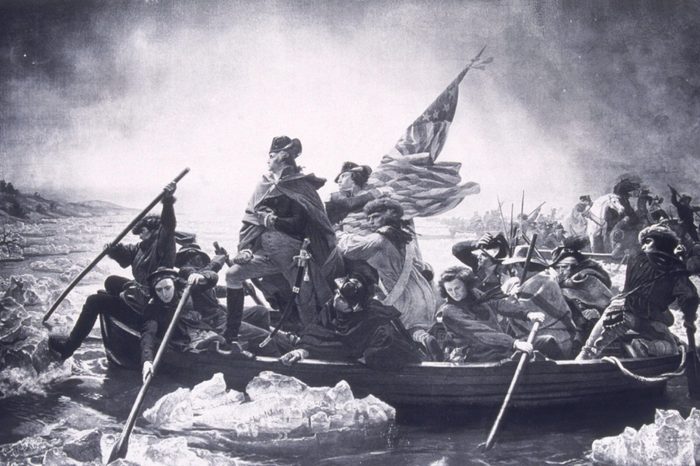
What percentage of Americans supported the British crown during the Revolutionary War?
The American Civil War is best known for pitting Americans against Americans, but the Revolutionary War did too. The U.K. National Army Museum estimates that about 20 percent of Americans were loyalists who supported the English crown. In fact, nearly 60,000 colonists and 15,000 black slaves were loyalists, according to Liberty’s Exiles by Harvard history professor, Maya Jasanoff. Check out these messed-up history facts you really wish weren’t true.
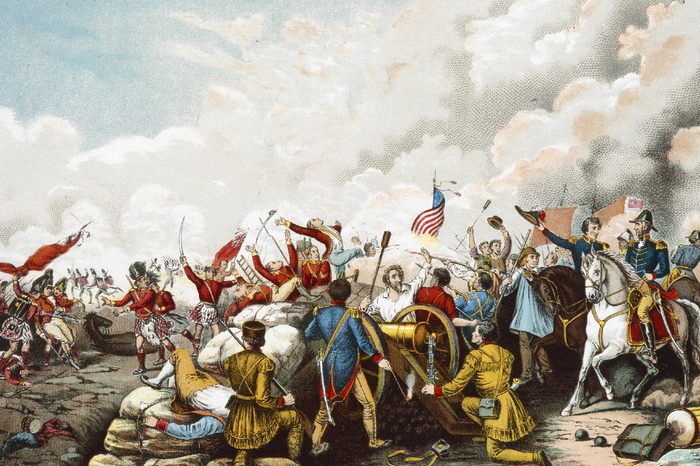
What U.S. government building in Washington D.C. was not destroyed by the British during the War of 1812?
The Patent Office was the only U.S. government building that wasn’t burnt to a crisp during the riotous raid that took place when the British troops captured their enemy’s capital. After the American troops burned down the government buildings in Canada, the British thought it was finally time to give the United States a taste of their own medicine. They set fire to the White House, the uncompleted Capitol building, the House of Representatives, the Library of Congress, and countless other federal buildings. Dr. William Thornton, the Superintendent of Patents, was able to salvage the Patent Office because he gave a persuasive lecture to the British about the importance of its preservation. If you got this one right, test your knowledge with 16 more history questions people always get wrong.
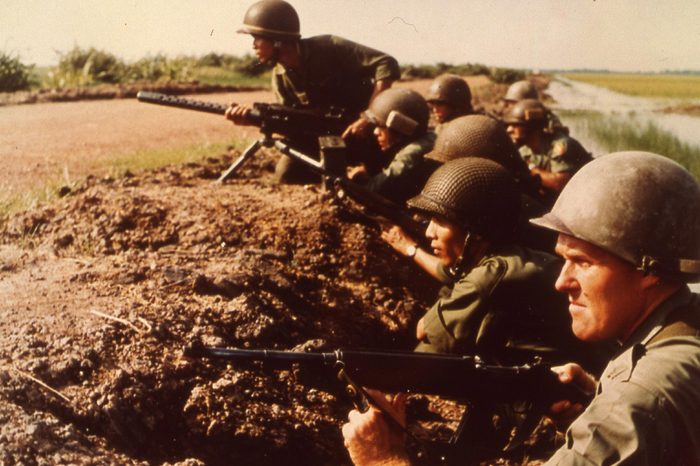
What toy did soldiers use as an antenna on the battlefield during the Vietnam War?
It is reported that the soldiers used Slinkies as radio antennas on the Vietnam warfront. Soldiers would clip one end of the Slinky onto a radio and run the other end up a tree to catch a clear signal. Apparently, the lightweight metal coil could receive a frequency of about seven to eight megahertz.
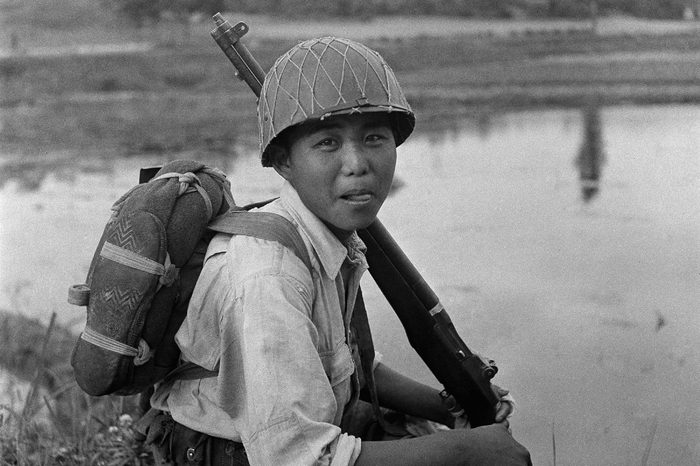
What does North Korea call the Korean War?
The North Koreans declare the Korean War as the “Fatherland Liberation War” because it was a crusade to unify the Korean peninsula under a communist rule. Yet, the name does not reflect the war’s actual outcome—an armistice not a victory. It took until April 27, 2018, 65 years later, for both North and South Korea to finally declare peace in Korea, which will bring a formal end to the Korean War once the United Nations and other countries involved in the war, such as the United States, also sign the official peace treaty. Take a look at these 11 big lies that made history.

What peculiar phenomenon happened to soldiers’ wounds during the Civil War?
After the Battle of Shiloh in 1862, a strange-but-true phenomenon occurred with wounded soldiers—glow in the dark wounds known as “Angel’s Glow.” It took two days and nights for the medics to reach the battlefield that left 3,000 wounded and 16,000 dead. Some of the soldiers noticed that their glowing wounds healed more quickly than those that didn’t. Although unknown at the time, the mystery is now recognized today as Photorhabdus luminescens (P. luminescens), a bioluminescent bacterium that lives in the guts of some parasitic worms. When the worms throw up the glowing bacteria, it can kill off disease-causing pathogens in the worm’s host. Normally, P. luminescens can’t survive at human body temperature but because the soldiers developed hypothermia from those chilly nights immobile on the ground, it allowed the bacteria to thrive and kill off any competing bacteria in their bodies. Check the other amazing U.S. history facts you never learned in school.
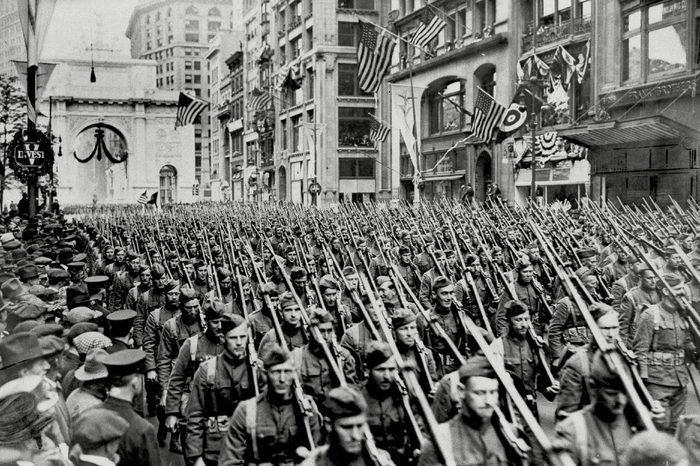
What was the most expensive war that the United States fought in?
The nearly four-year battle that the United States fought during World War II racked up an expensive bill—an estimated $4.1 trillion, according to a report from the Congressional Research Service. The National Defense Budget estimates that the Global War on Terror has garnered a near $2.1 trillion in expenses.
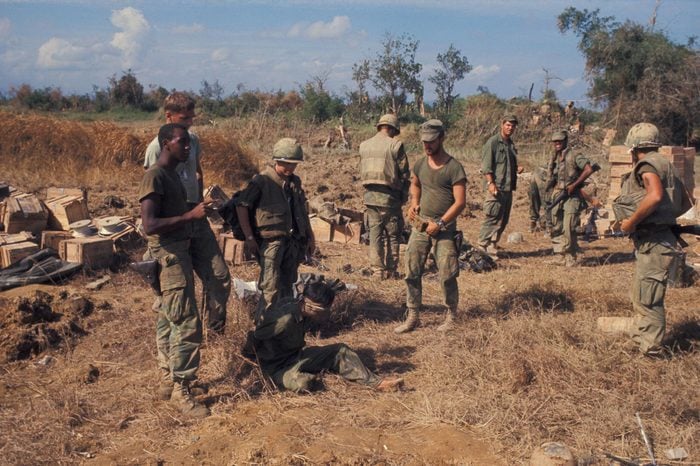
Which group of American soldiers outnumbered the others in the Vietnam War: the volunteers or the draftees?
The enlisted members outnumbered the draftees despite the avid war protests and popular culture references to Vietnam War soldiers consisting of poor and minority soldiers arriving at the battlefield via the draft. Volunteers between 1964 and 1973 totaled at more than 8.7 million versus the 2.2 million who were drafted—a whopping ratio of nearly four to one. Here are the 18 history lessons your teacher lied to you about.
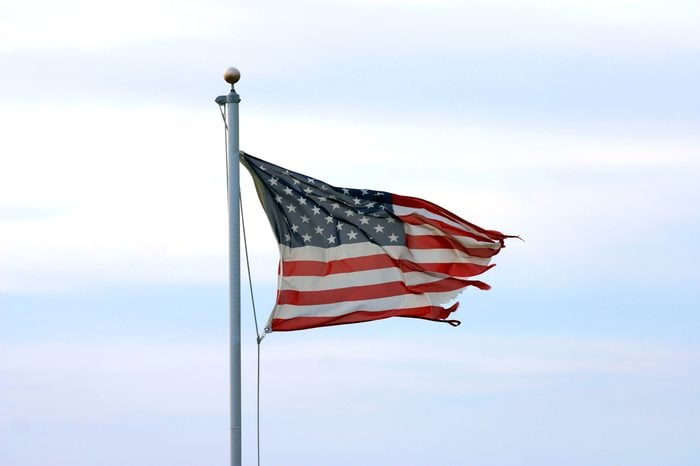
Which war inspired the Star-Spangled Banner?
The War of 1812 was the muse for the U.S. national anthem that you hear sung at every big sports game. As the U.S. soldiers raised a huge American flag at Baltimore’s Fort McHenry to celebrate their victory over the British forces, the sight of those “broad stripes and bright stars” inspired Francis Scott Key to transpose his emotions into a beautiful melody.
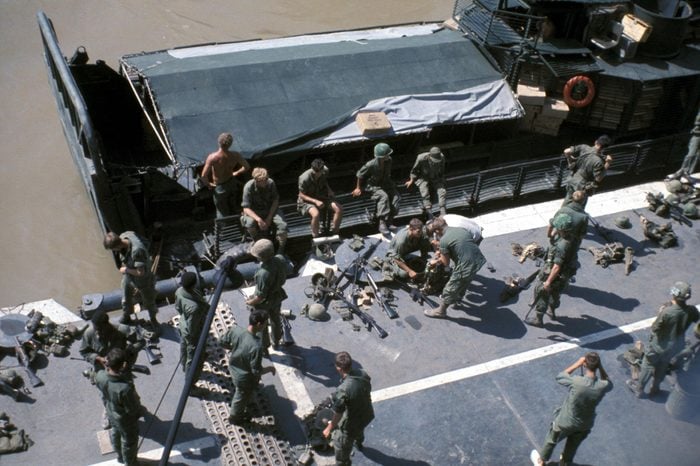
Which war had the most U.S. service member deaths?
There were nearly 500,000 deaths suffered during the American Civil War, but the U.S. military fatalities from World War II trail closely behind totaling more than 405,000 deaths. The United States suffered the least amount of fatalities during the Indian Wars and Persian Gulf War. Next, put your state geography skills to the test with these 24 U.S. state facts everyone gets wrong.